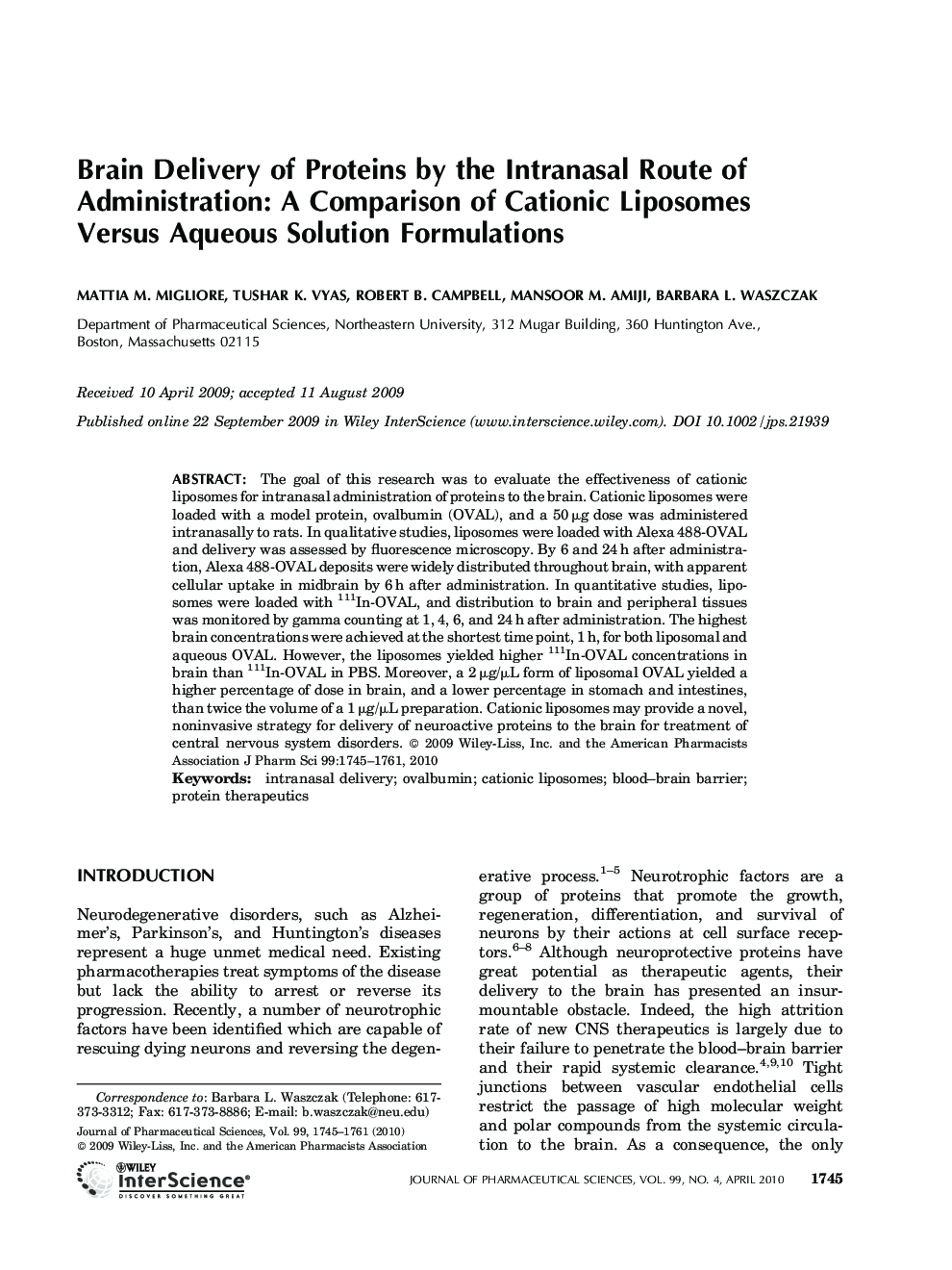| Article ID | Journal | Published Year | Pages | File Type |
|---|---|---|---|---|
| 2485096 | Journal of Pharmaceutical Sciences | 2010 | 17 Pages |
Abstract
The goal of this research was to evaluate the effectiveness of cationic liposomes for intranasal administration of proteins to the brain. Cationic liposomes were loaded with a model protein, ovalbumin (OVAL), and a 50âµg dose was administered intranasally to rats. In qualitative studies, liposomes were loaded with Alexa 488âOVAL and delivery was assessed by fluorescence microscopy. By 6 and 24âh after administration, Alexa 488âOVAL deposits were widely distributed throughout brain, with apparent cellular uptake in midbrain by 6âh after administration. In quantitative studies, liposomes were loaded with 111InâOVAL, and distribution to brain and peripheral tissues was monitored by gamma counting at 1, 4, 6, and 24âh after administration. The highest brain concentrations were achieved at the shortest time point, 1âh, for both liposomal and aqueous OVAL. However, the liposomes yielded higher 111InâOVAL concentrations in brain than 111InâOVAL in PBS. Moreover, a 2âµg/µL form of liposomal OVAL yielded a higher percentage of dose in brain, and a lower percentage in stomach and intestines, than twice the volume of a 1âµg/µL preparation. Cationic liposomes may provide a novel, noninvasive strategy for delivery of neuroactive proteins to the brain for treatment of central nervous system disorders. © 2009 WileyâLiss, Inc. and the American Pharmacists Association J Pharm Sci 99: 1745-1761, 2010
Related Topics
Health Sciences
Pharmacology, Toxicology and Pharmaceutical Science
Drug Discovery
Authors
Mattia M. Migliore, Tushar K. Vyas, Robert B. Campbell, Mansoor M. Amiji, Barbara L. Waszczak,
